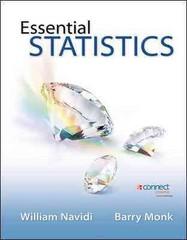

See the attached documents and show working clearly
. Show (mathematically) that output, Y, is an increasing function of the real money stock, MIP, and an increasing function of government spending.G . . bet: co=200 mo=400 G=100 C} = 0.5 m. = l l= 0 bn = 300 m2 = 0.8 Yn=550 bl = 0.4 M5= 200 Derive the AD equation using these gures. (All gures are in millions of US dollars.) . Suppose the aggregate supply takes the following form: P = (1.5)!" + (l {5000' Y_ )and P=l . Assume we are in the short-run for now. What is the equilibrium output, Y'? What is the expected price level, P'? Draw the AS-AD diagram. . The Keynesian government is up for reelection soon. and so it wants to achieve the natural level of output. (We are still in the short run.) Propose two different policy options that would do the job. For each policy option, draw the lS-LM and the AS-AD diagrams, and show how the first translates into the second. Calculate by how much the government must increase/decrease government spending to achieve the natural level of output. . The Keynesian government decides not to listen to you, and raises government spending by more than would be required to achieve the natural level of outpuL Its argument is that higher output is better. The voters apparently think so too, and the government gets reelected. What happens as time passes and we get to the \"medium run"? (You do not have to do any calculations, just draw diagrams and give some intuition.) . Suppose the world price of oil increases. Use a diagram to show what will happen in the Republic of Keynesia, starting with the new medium run equilibrium you found in part 6. Suppose the Phillips curve is given by at, = n, + 0.2 -5u, where n, = On 1. What is the natural rate of unemployment in this economy? 2. For now assume that 0 0. (What does that mean?) Suppose that the government decides to lower unemployment to 3% and keep it there forever. What is the rate of inflation for t=100? Is this realistic? Why? 3. Assume that only for the first three periods (t=1, t=2, and t=3) people form their expectations using 0 0. After the third period, from t=4 on, they start using 0 1 forever. Also, the government still wants to keep unemployment at 3%. What is the rate of inflation for t = 4, 5, and 6? What is the expected rate of inflation for t=4, 5, and 6? Is this setup more realistic? Why










